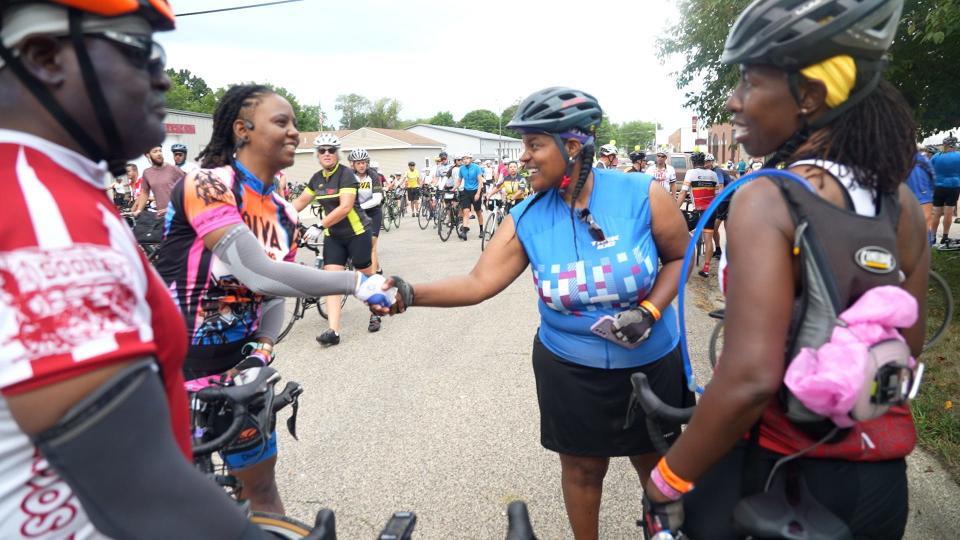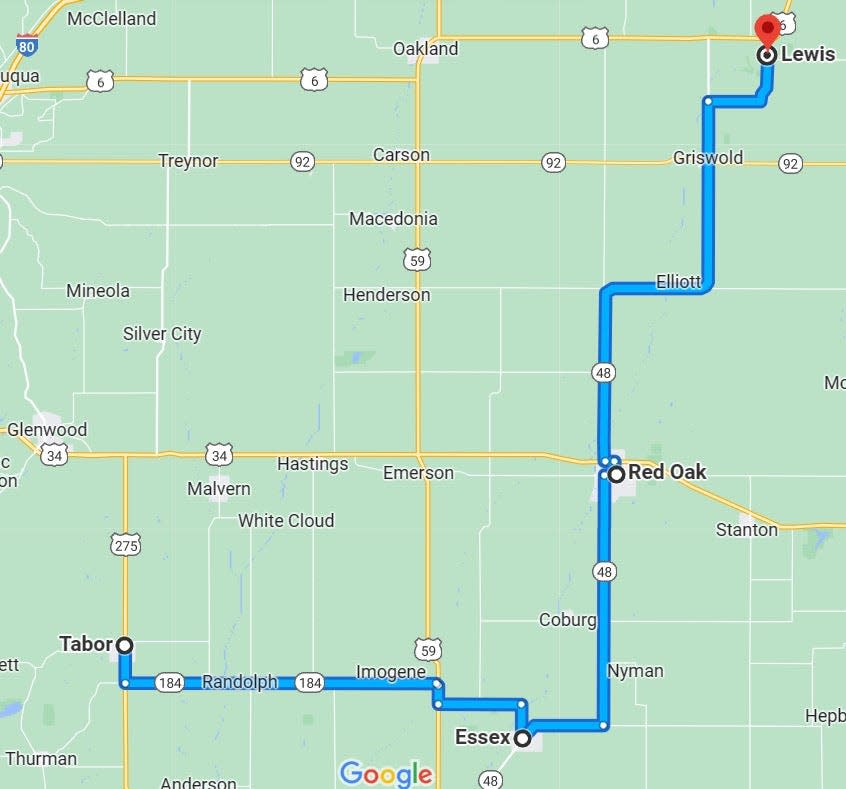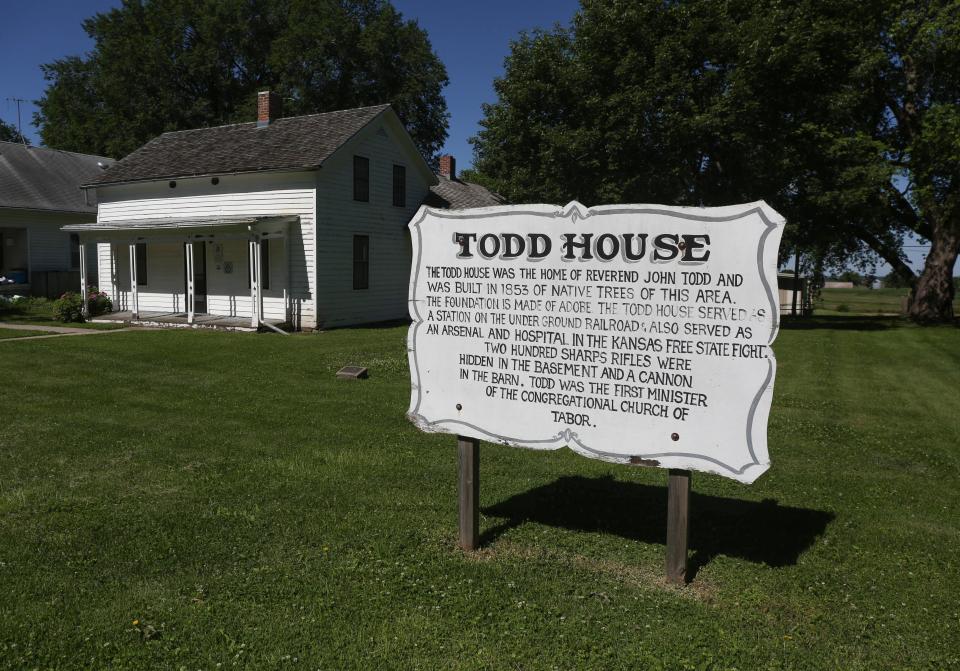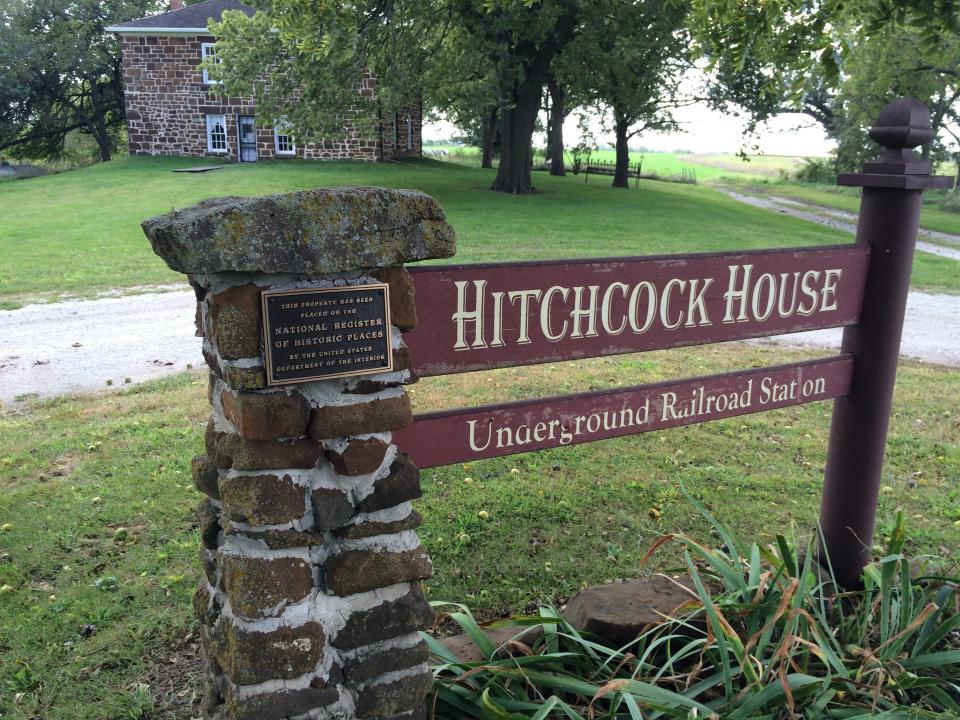A new bike ride aims to spotlight Iowa's role in the underground railroad
Dayna Chandler grew up with only bits and pieces of Black history.
In school, she learned about slavery and the Civil Rights Movement but felt those lessons weren't entirely reflective of the Black experience — they're chapters of the nation's painful past pressed neatly into textbooks. Often the only Black student in her Iowa classes, Chandler remembered teachers putting her on the spot to comment on those pivotal moments — which, she said, she couldn't really speak to with much detail.
"I did not like history as a young child," said the 53-year-old from Des Moines, adding the strides of Black Americans in Iowa also were missing from those lessons.

It was only later in life that Chandler unlocked her home state's own history. Chandler discovered that Iowa in 1868 was the first to desegregate public schools. That was long before Brown vs. Board of Education, the 1954 landmark Supreme Court case that led to the end of racial segregation in schools in the U.S.
Chandler also came across Frank "Kinney" Holbrook, a Tipton, Iowa, native who became the state's first Black collegiate athlete and guided the University of Iowa football team to its first conference title in 1896.
Now, Chandler is among a group of organizers seeking to spotlight more of Iowa's Black history.
This September, Chandler, co-founder of the Iowa chapter of Black Girls Do Bike, is among the sponsors hosting a two-and-a-half-day bike ride from Tabor to Lewis — two cities that played a key role in Iowa's underground railroad.
When is the bike ride?
The first of its kind, the Iowa Underground Railroad Ride is a 135-mile round trip from Tabor to Lewis that will take place Sept. 15 to Sept. 17. It includes tours of the Todd House and the Hitchcock House and overnight stays at campsites in Tabor and Cold Springs Park in Cass.
The bike ride kicks off in Tabor on Sept. 15, and the route runs through Essex and Red Oak. A breakdown of each day's activities will be posted on the event's website.

How did they dream up the ride?
Julia Rose, president of the National Association of Social Workers, an event sponsor, said she, like Chandler, was unaware of Iowa's history. A California native, Rose said she recently learned about Iowa's underground railroad after news outlet Iowa Starting Line shared a map of the routes and stations across the Hawkeye State that helped Black Americans escape to freedom during the 1800s.
Despite its name, the underground railroad was not an actual railroad or a train, nor was it underground. It was a network of people, both Black and white, who provided shelter and aid to enslaved Black Americans traveling to states in the North or to Canada where slavery was illegal.
Rose, a self-described "casual rider," was intrigued by Iowa's involvement and reached out to members of the Iowa Bicycle Coalition. From there, she met Chandler and began mapping out the inaugural Iowa Underground Railroad Ride.
She and Chandler view the ride as two-fold: It's "reflective" and educational — but also fun and different. It's a celebration of Iowa's Black history, Chandler said.
"We're illuminating our history," Chandler said. "This is a great way to shine a light on what our state has done."
Why are the Todd House and Hitchcock House so important?

State historians point to Fremont and Mills counties as places where most of the underground railroad activity occurred. Those counties drew enslaved people fleeing western Missouri.
Historians also say southeastern Iowa was another stop for enslaved people from northeastern Missouri on their way to the Mississippi River and Illinois.
Tabor, which is in Fremont County, is home to one of the only remaining underground railroad stations in the state.
The Todd House belonged to the Rev. John Todd, one of three abolitionists who founded Tabor in 1852. The modest home that now sits at 702 Park St. was the third structure built in the city and later became a safe haven for enslaved people.
According to the Tabor Historical Society, Todd reported just "five escapes" in his autobiography. But it's likely there were many more, the historical society said.
The exact number of people who passed through Tabor is unknown because there are no written records. Working with the underground railroad and helping people escape enslavement was considered a violation of federal law, the historical society explained.

People who stopped at the Todd House may have also traveled to Lewis to find the Hitchcock House, according to the ride's website.
The Rev. George B. Hitchcock built his home at 63788 567th Lane in Lewis. Like Todd, Hitchcock was an abolitionist and active participant in the underground railroad. His home, another surviving remnant, also was a hub for enslaved people and other abolitionists.
How much does the ride cost?
Tickets cost $125 for participants who register online for the event before Sept. 1. Prices will go up to $135 after.
The fee covers the cost of tours for the Todd House and Hitchcock House, three meals, a campsite at Cold Springs Park and gear transportation. Riders are responsible for bringing their own camping gear including a tent.
Custom jerseys commemorating the event will be sold for $80.
Is the ride hard?
Rose said the ride can be difficult because of the distance between Tabor and Lewis, but she encourages participants of all skill levels to come out.
It's about 68 miles each way, and "we do plan on a ride there and ride back" on Saturday and Sunday, she said. A SAG vehicle will be there to help riders if they encounter issues with their bicycles or they need rest.
Rose said there also are volunteer opportunities for those who want to be part of the event but choose not to ride it.
Chandler said this experience can be "transforming" for all participants from Iowa or outside the state.
"Whether they're on a bike or off a bike, we want you to come out and learn and be a part of it," Chandler said.
F. Amanda Tugade covers social justice issues for the Des Moines Register. Email her at ftugade@dmreg.com or follow her on Twitter @writefelissa.
This article originally appeared on Des Moines Register: How to register for the first Iowa Underground Railroad Ride bike ride

